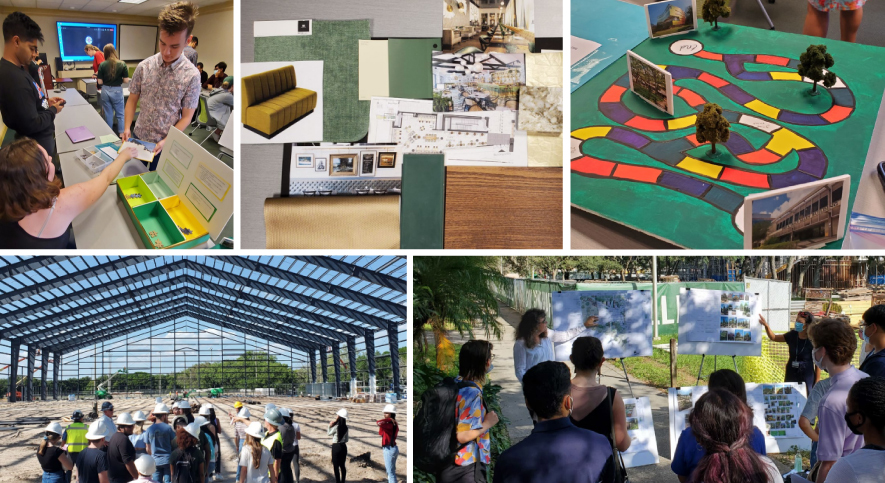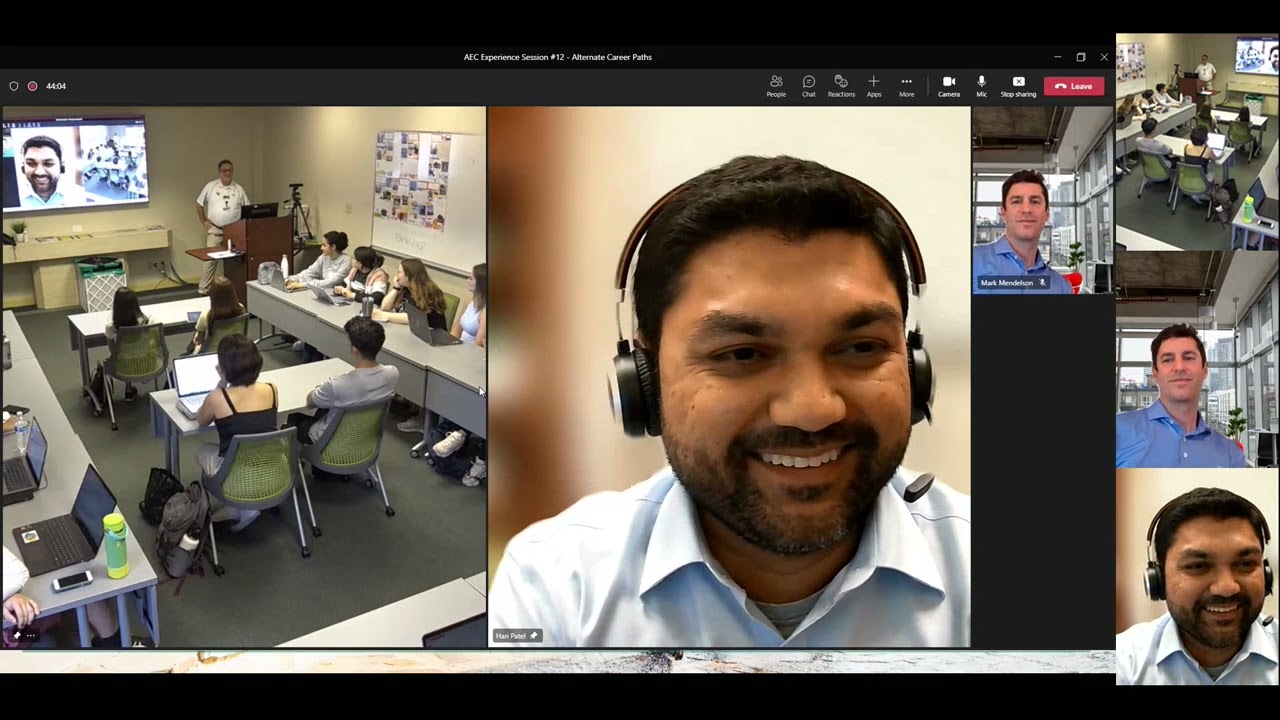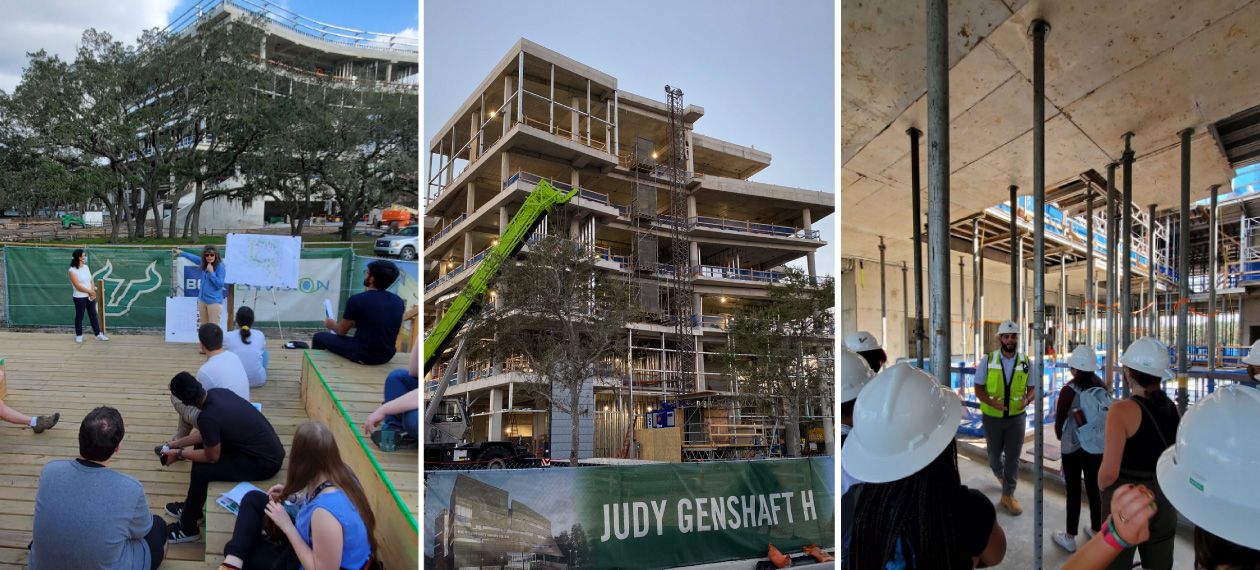When someone suggested to Steve Lafferty that the University of South Florida should offer tours of ongoing construction projects on campus to students, it seemed like a novel idea. But, as Director of Design and Construction, he also felt it was one with a lot of real-world value.
“We have four projects coming out of the ground simultaneously within a block and a half,” Lafferty said during a presentation at the Higher Ed Facilities Forum. “Somebody said, ‘Why don’t we let some of the students tour these projects?’ I don’t know about you, but when I was going to college that would have been huge for me, just seeing how those things come together.”
Lafferty viewed this as an opportunity to provide real-world education to students from various disciplines to develop critical thinking skills and gain hands-on learning experience.
And it’s working, with more than 1,000 students taking guided job site tours over three semesters, and professors shaping curricula around the construction projects in engaging ways to educate and encourage out-of-the-box thinking.
The Power of Engagement
The projects included an indoor athletic facility, a new student wellness center, the addition of a centrifugal chiller to the Southeast Chiller Plant, and the Judy Genshaft Honors College building. Two tours were offered each semester on Tuesdays and Fridays to accommodate class schedules, with a 10-question quiz at the end for accountability.
"Our intern put a 360-degree camera on his head and walked the construction site once a week. It’s not any extra time for us, but it documents the construction, and we benefit from that documentation afterwards.”
To supplement the tours, 12 online sessions with engineers, architects, project team members, and contractors were held over three semesters with recordings archived on YouTube. Discussions covered BIM and technology point scanning; different structural, mechanical and foundation systems; building envelopes; acoustics; lighting; project delivery methods; and MEP services – all focusing on why these were chosen and the benefits and drawbacks of other technologies used in construction.
In addition to the guided tours, students could observe the construction from a viewing platform or access a website with time-lapse videos to follow the progression of a building’s construction. OpenSpace was used to document progress, a tool that Lafferty equated to Google maps for a construction site.
“Our intern put a 360-degree camera on his head and walked the construction site once a week,” he explained. “It’s not any extra time for us, but it documents the construction, and we benefit from that documentation afterwards.”
An Enriched Learning Opportunity
The USF Honors College has a unique program that requires students to take an extra two-hour class every semester. Lafferty cited a past example of students being trained as docents at the Tampa Bay Art Museum to guide veterans with PTSD through the museum to talk about the art and the process.
More recently, the college developed a three-semester class based on the construction of its new state-of-the-art facility.
“In the future, whether they are doctors or engineers or the leaders of their companies, they’re probably going to be involved in a construction project at some point,” Lafferty pointed out.
One of the professors in the Honors College is trained as an architect and approached him about doing a class on the construction of the building itself. “She asked me to come in and help, to sit there and ask questions, tell stories, and engage with the students during the project.”
The first semester focused on the design and construction process with classroom exercises to develop guiding principles for the project. The students also delved into the decision-making for structural systems, landscape and exterior space design, and the selection of interior materials.
"In the future, whether they are doctors or engineers or the leaders of their companies, they’re probably going to be involved in a construction project at some point."
For class projects, one group built a website showcasing the construction of the building while another group created a game similar to “Hooks and Ladders” (a game popular with college students). A third group developed a scavenger hunt where players searched for puzzle pieces to learn about different parts of the building.
The second semester focused on sustainability and the major LEED credit areas, including water efficiency, sustainable sites, energy and atmosphere, and indoor environmental quality.
The last semester explored the project’s oral history with interviews with major donors, stakeholders, and key project team members, who described the evolution of the project and unusual things encountered throughout construction.

Some students furthered their education by applying for internships with contractors, engineers, and architects on the projects. Lafferty noted that they’ve filled 15 internships, with additional students expressing interest. One civil engineering student even switched to interior design after a summer internship. “Had we not done this, she would be on a totally different career path.”
“Why do this?” Lafferty asked as he concluded his talk. “It all comes down to are we, as facility people, promoting student success?” Even in construction and facilities management, they still work in the service of education, he argued to his construction and FM peers. They should also make opportunities to get involved in educating students.
Gallup research has shown that a student’s career comes down to four different milestones:
- A faculty member that took an interest
- An advisor who cared and gave good advice
- An impactful internship experience
- An extraordinary class experience
“Start with the easy button. You’ve got construction sites. Say, ‘Hey Mr. Contractor, after everyone leaves at 3:30 p.m., can we just invite people to do a construction tour?’ Connect with the faculty on your campus and ask them to invite their students to come out. You will impact some students’ lives in a very positive way.”
Posted by
Join us at HEFF!
An interactive retreat for facilities leaders at the nation's top colleges and universities.
Nov 8-10, 2026 | San Antonio, TX
Learn More









Comments